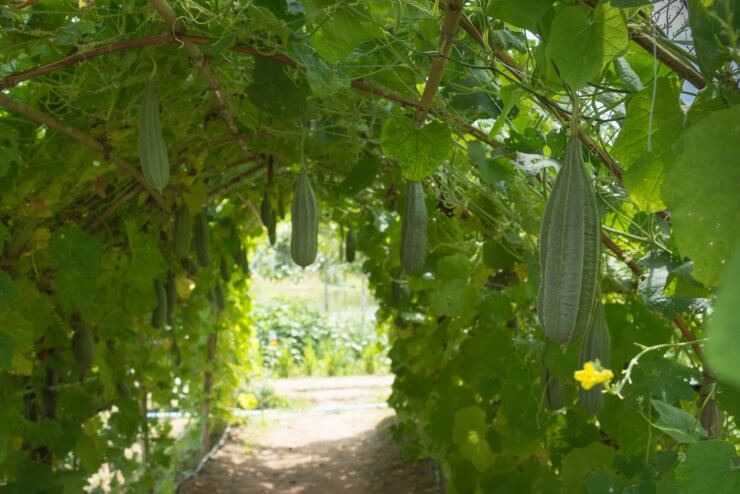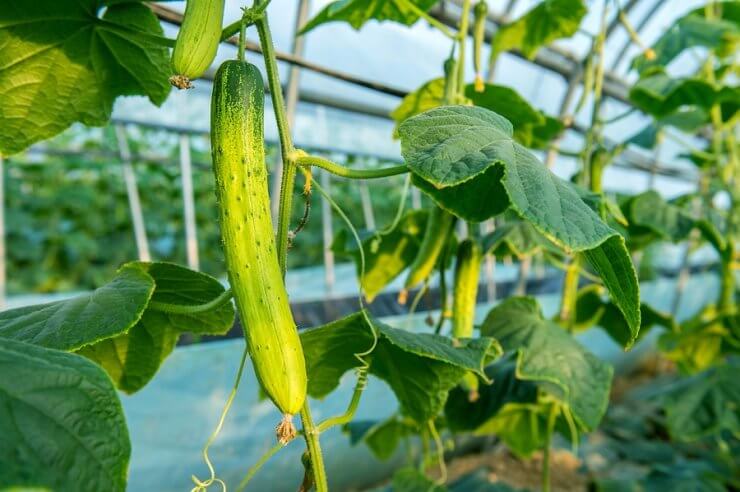
There’s something about a hanging vegetable arbor that turns a garden into a magical hideaway where you can breathe deep and enjoy nature. In a way, I suppose that’s true, too. Once the season is underway, you can stand underneath your arbor and be surrounded by lush greenery and dappled sunshine. I’ve even seen a few that are large enough that people have little picnic tables under them.
Of course, trellises and arbors are also great ways to maximize your space and keep those vining vegetables off the ground. You can buy a vegetable arbor, although it can be expensive. You can also build your own if you’re mechanically inclined.
There’s also a third option if you’re the DIY type but don’t have much in the way of building or carpentry skills. That’s what we’re looking at here.
Discover 7 top tips for growing, harvesting, and enjoying tomatoes from your home garden—when you access the FREE guide The Best Way to Grow Tomatoes, right now!

The DIY hanging vegetable arbor that anyone can make
You have some options, neither of which require many tools. The first is made from four 6-foot-tall heavy-duty steel fence T-posts and a galvanized steel cattle panel. Cattle panels come in different sizes, but 16 feet is typical. They are flexible, yet designed specifically to fence in livestock. The mesh size is different, too, but most have openings large enough to accommodate hanging vegetables.
Start by measuring and marking your space. You’ll need to position your T-posts 3 or 4 feet apart for the open ends of the vegetable arbor and then space them at the appropriate distance for length. That will depend on the size of the panels you get.
Once you’ve marked your spots, use a sledgehammer or fence post driver to pound them about two feet into the ground. Then, working with a partner, place your cattle panel next to the posts. You should have your arch shape at this point. Next, use metal wire or zip ties to securely attach each corner of the cattle panel to the posts.
Pro Tip: Call the utility company before you dig! You don’t want to pound a metal post into the ground and accidentally hit a gas pipe!
Here’s another way to make a hanging vegetable arbor.
Start with the T-posts, but instead of the 6-foot post, grab 10-foot posts. These may be a little harder to get into the ground, but it will give you enough height to walk underneath your arbor once all those vegetables start coming in. For extra sturdiness, you may want to use concrete to set the poles.
Next, use bamboo or cedar poles to create a “ladder” on each side of your arbor, leaving the two ends open. Secure the poles with fence brackets, wire, or rope, depending on what you feel is most secure.
Lastly add poles across the top and secure them.
Once your arbor is done, you can use it for hanging vegetables such as cucumbers, honeynut squash, pole beans, cucamelons, peas, and more.
Have you made a DIY garden arbor? What was your experience like?
Discover 7 top tips for growing, harvesting, and enjoying tomatoes from your home garden—when you access the FREE guide The Best Way to Grow Tomatoes, right now!





Warning: I planted morning glories next to the tomatoes and cucumbers . Prior years morning glories had not done well , so I thought it would be the same. WRONG- they took over big time and did not allow the veggies to grow.
This year. No morning glories or moon flowers.